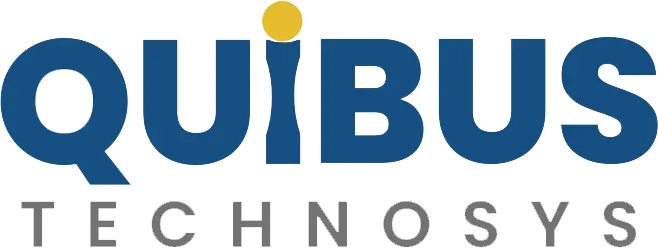When you want to optimize your website or make it findable for search engines, you need technical SEO. Technical SEO plays a very vital role in making your website fit and visible to search engines. It involves setting up your site in such a way that search engines can easily crawl through your website and understand the data.
Applying Technical SEO factors can help you by enhancing the ranking and increasing organic traffic on your website. To help you and your website, we have created an all-inclusive technical SEO checklist for new websites as well as old websites.
This checklist consists of all the tips, best practices and common mistakes that will help you identify problems and provide a solution to fix those errors and boost the performance of your website in the SERP.
What is Technical SEO?
Technical SEO is the efforts you make on your website for the search engines to crawl and index your web pages without difficulty. Doing Technical SEO allows your content to rank higher and increase organic traffic.
Technical SEO Checklist to Improve Ranking and Visibility:
- Optimizing Website and URL Structure
- Make your website mobile-friendly
- Optimizing page speed
- Check the crawling and indexing of your website.
- Eliminate duplicate content
- Using Schema Markup and Structured Data
- Shift your website to HTTPS.
- Submitting or updating XML sitemap
- Fixing 404 errors and broken links
- Monitoring and analyzing the performance of the website
Let’s go through the technical SEO checklist in detail:
1. Optimizing website and URL structure
Website and URL structure plays a crucial role when it comes to improving your website visibility for search engines. Optimizing your website structure is essential because it provides users with a better experience and helps search engines understand your website’s content.
You can improve the structure of your website by grouping content into categories and subcategories; doing this will make it easier for the visitors to find what they are looking for and will also help the search engine understand your content better.
Using Breadcrumbs for navigation can also help in improving user experience. Breadcrumbs help visitors jump directly to the page they want to without going through all the pages.
Identical to website structure Optimization, URL structure is also essential. Creating clear and descriptive URLs for every page can help users and search engines understand what the page is about. Google also says, “ Keep a simple URL Structure” You can check out Google’s Guide For URL Structure.
2. Make your website mobile-friendly
Optimizing your website for mobile is important because more than 60% of the world’s population uses mobile phones to access the internet. As a result, optimizing a website for mobile is crucial.
One of the Google Search Central blogs says that for ranking and indexing purposes, Google will prioritize crawling the mobile version of the page. You can take a look at Google’s mobile-first indexing blog.
Another important step in making your website mobile-friendly is to make your website responsive. In other words, your website should adjust itself according to the display size and orientation.
Responsive websites enable users to easily read the content on any screen, whether a smartphone or a Computer, without zooming or excessive scrolling.
Another key factor of the technical SEO checklist is optimizing the load speed of your website. Having a slow-loading website can result in loss of traffic because most mobile users don’t wait more than 3-4 seconds.
To optimize your website’s speed, you can compress images before uploading and using WebP format for images. Using these techniques will improve your website’s load speed.
3. Optimizing page speed
In this fast-moving digital era, page speed optimization has become crucial for any website’s success. Page speed optimization refers to improving the loading time of a webpage; by doing this, it can significantly improve the user experience, and also, according to Google, a good UX (user experience) is a ranking factor.
As I said earlier, users leave the website that takes longer than 3-4 seconds to load. So, by optimizing your webpage, you are not only improving your page speed, but you are also improving UX, and it will result in more traffic and less bounce rate.
How to optimize your Page speed? To optimize your page speed, you should consider the following techniques. First, reducing server response times is an important initial measure. You can achieve this by choosing a trustworthy hosting service.
Additionally, compressing various files such as images, CSS files, and Javascript will significantly improve the load speed, and using WebP format for images is another way of improving page speed.
4. Check the crawling and indexing of your website.
To make your website appear in relevant search results, you must ensure that the search engine is crawling and indexing your website. That is why checking your website’s crawling and indexing status is necessary.
Crawling is a process in which Google Crawler crawls your website pages and content. On the other hand, indexing is the process by which Google’s crawler adds crawled pages to its database.
How to check your website’s crawling and indexing status:
Using tools like Google search console, you can check the crawling and indexing status of your website. GSC or Google search console provides you access to detailed reports such as crawl errors, sitemaps, and indexing status. Consistently reviewing these reports will help you identify potential areas that need optimization to improve the crawling and indexing of your site.
One more thing you can do is check your Robots.txt and Robots meta tag. Robots.txt file gives you control over what pages a crawler (google bot) can crawl and index. This file signals the search engine to crawl or not to crawl a site. In comparison, the robot meta tag instructs the crawler how to crawl and index the content of a web page.
5. Eliminate duplicate content
Removing duplicate content from web pages is important to make effective indexing and ranking by search engines for technical SEO. Duplicate content refers to content that is nearly identical in different URLs.
Search engines may become uncertain about handling this kind of duplication, leading to reduced page visibility and rankings potential. You can employ several strategies to reduce or fully eliminate duplicate content.
The first step is to prioritize the creation of unique and relevant content is essential. Creating unique, intelligent content reduces the chance of producing duplicate content. In other words, creating unique and exclusive ideas that are unavailable will help you reduce duplicate content.
When optimizing the search engine performance of your website, using canonical tags is a game changer. When the same or similar information exists across multiple URLs, using these tags helps search engines recognize the preferred version of the content. This information is critical in allowing the search engine to index and ranks the preferred version of a page.
Redirection HTML code 301 can be used on those pages which have the same content but on different URLs.
6. Using schema markup and structured data
Adding Schema and structured data are important factors in this technical SEO checklist. Schema markup and structured data are essential for offering additional context and information about the content to search engines in order to improve technical SEO significantly. Schema is a type of code that assist search engines in decoding the meaning and features of specific page elements.
It provides a better visual representation of your content. Your content can also rank at the first position in the SERP if it is worth it, according to Google. Using schema markup, you can get well-designed search listings, rich snippets such as star ratings or pricing information, and crucial event dates, which assist in delivering a richer user experience during online searches.
Using structured data can help search engines better understand the content of your website. Using structured data can improve the possibility of appearing in relevant search results.
7. Shift your website to HTTPS.
Another important factor of the technical SEO checklist is the HTTPS protocol. Shifting your website to HTTPS is a vital consideration with multiple benefits in improving online visibility. HTTPS guarantees the safety and encryption of data transmitted between visitors’ devices and the website, preserving their respective privacy and integrity.
Obtain an SSL/TLS certificate from a trustworthy Certificate Authority (CA). This certificate will ensure that your website is legitimate and the HTTPS protocol is enabled. Following the purchase of this certification, it is important to configure server settings to force HTTP redirection to their secure counterpart-HTTPS.
Once HTTPS has been implemented on your website, the next step is updating all internal links, such as navigation menus, internal URLs, and image sources accordingly. This process guarantees a seamless transition for users and search engines while preventing potential SEO setbacks caused by mixed content warnings.
8. Submitting or updating XML sitemap
You should first generate an XML sitemap to submit or update it. You can submit or update the sitemap through various tools or plugins designed for different content management systems (CMS) or via manually creating the XML file. The sitemap should entail all of the pertinent URLs from the website, including any new web pages or updated URLs.
You can submit your sitemap to Google Search Console once it has been successfully created.
Maintaining a proper XML sitemap is a task every website owner should prioritize. XML provides comprehensive information about every URL found on the site, including details such as the priority level of each page and its last modification date. To ensure proper indexing by search engines, submitting or updating an XML sitemap should be part of every online business strategy.
9. Fixing 404 errors and broken links
The importance of keeping your website functional and user-friendly should never be overlooked, which involves responding quickly to broken links and 404 problems. When a visitor encounters a 404 error message and realizes that the desired page or resource cannot be retrieved, it sends a wrong message to your website visitors and can decrease the traffic.
Steps you can follow to fix 404 errors and broken links:
The first step is to conduct a routine website audit which involves identifying invalid hyperlinks and spotting 404 error codes. Conducting a regular audit will help you in keeping your website functional. There are many automation tools available that you can leverage to scan and highlight these errors, and then you can fix or update the errors.
Improving website functionality requires adjustments to its basic structure, including modifying URLs when necessary. When pages have changed location or names, establishing proper redirection protocols becomes essential for ensuring smooth navigation for visitors.
Using 301 redirects in these cases is a best practice since they convey a clear message to search engines about the updates made and help preserve any accumulated clout associated with previous URLs.
10. Monitoring and analyzing the performance of the website
Monitoring and analyzing a website’s performance is essential to ensure the achievement and effectiveness of a website in reaching its intended goals. A consequential factor affecting website performance is its loading speed which must be measured closely.
Poor site speeds lead to high bounce rates causing users to abandon it without waiting to load fully. Thankfully, monitoring tools offer insights on individual page speeds, equipping website owners with actionable solutions when tweaking web elements that otherwise hinder great user experience.
To ensure effective marketing efforts aimed at driving user engagement with a business’s online presence from its website, you should consider conducting regular reviews of its traffic patterns.
Analyzing metrics such as visitor numbers by demographic groups reveals critical insights into browsing habits that help improve upliftment strategies for targeted content creation like page views or identifying how frequently new users visit for identifying which kinds appeal most based on factors like distinctions between various visits – could serve usefully towards managing firm resources appropriately.
How is technical SEO different from on-page and off-page?
Technical SEO is a process to optimize a website’s technical aspects to enhance its performance on SERP. Technical SEO aims to make a website crawlable, findable, and scalable for search engines.
On-page refers to applying optimizing efforts on the website and its content, such as Title optimization, Keyword research, etc. And Off-page refers to making optimization efforts beyond your website, such as Guest posting, Link building, etc.
FAQs
Q. Why is technical SEO important?
Technical SEO is important because it helps search engines crawl and understand your website’s content. You can increase visibility and organic traffic on your website by doing technical SEO.
Q. What are Technical SEO factors?
Ans. Technical SEO checklist:
- Optimizing Website and URL Structure
- Make your website mobile-friendly
- Optimizing page speed
- Check the crawling and indexing of your website
- Eliminate duplicate content
- Using Schema Markup and Structured Data
- Shift your website to HTTPS
- Submitting or updating XML sitemap
- Fixing 404 errors and broken links
- Monitoring and analyzing the performance of the website
Q. What is an On-page SEO checklist?
Ans. On-page SEO checklist:
- Keyword research
- Create high-quality and unique content.
- Write in proper heading structure.
- Optimize title and meta description.
- Url structure optimization.
- Internal linking
- Image optimization.
Q. What is an Off-page SEO checklist?
Ans. Off-page SEO checklist:
- Build valuable backlinks.
- Leverage social media platforms.
- Guest posting.
- Participate in forums.
- Engage with the audience in the comment section.
- Build authority and trust.
Q. How to improve page load time?
Ans. To improve page load time, you first need to reduce server response time; it is an important initial measure. You can achieve this by choosing a trustworthy hosting service. Additionally, compressing various files such as images, CSS files, and Javascript will significantly improve the load speed. Last but not least by using WebP formats for images.




